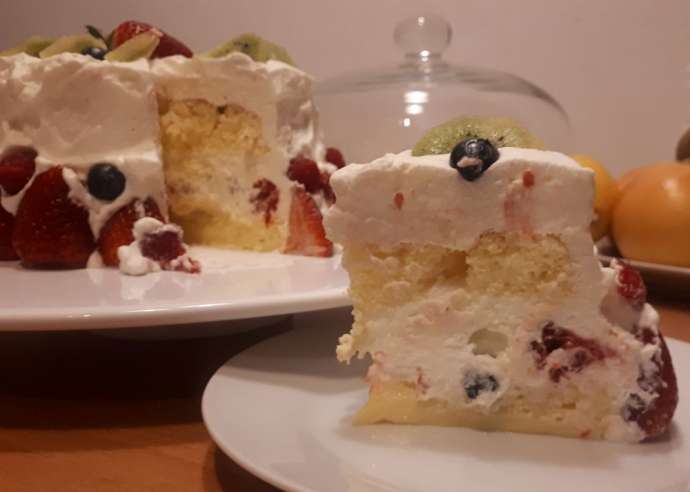April 3, 2019
This week’s recipe presents a cake which simply cannot disappoint. While we advise you to pay attention to some details, especially the baking part, the reward comes in the mousse-like cheese flavoured texture which combines nicely with the various berry fruits that are currently entering our local markets.
The cake recipe is loosely based on so-called Japanese cheesecake, also known as cotton cake, although our recipe calls for using a bit more cream cheese. Consequently, our version of the cake has less elasticity and will almost certainly crack at the top, which is nothing to worry about unless you want to create a Hello Kitty out of powdered sugar on it.
As already suggested, the cake itself is just as delicious if eaten without any filling, which is great if you’re worried you might not have enough time to follow the whole recipe presented here.
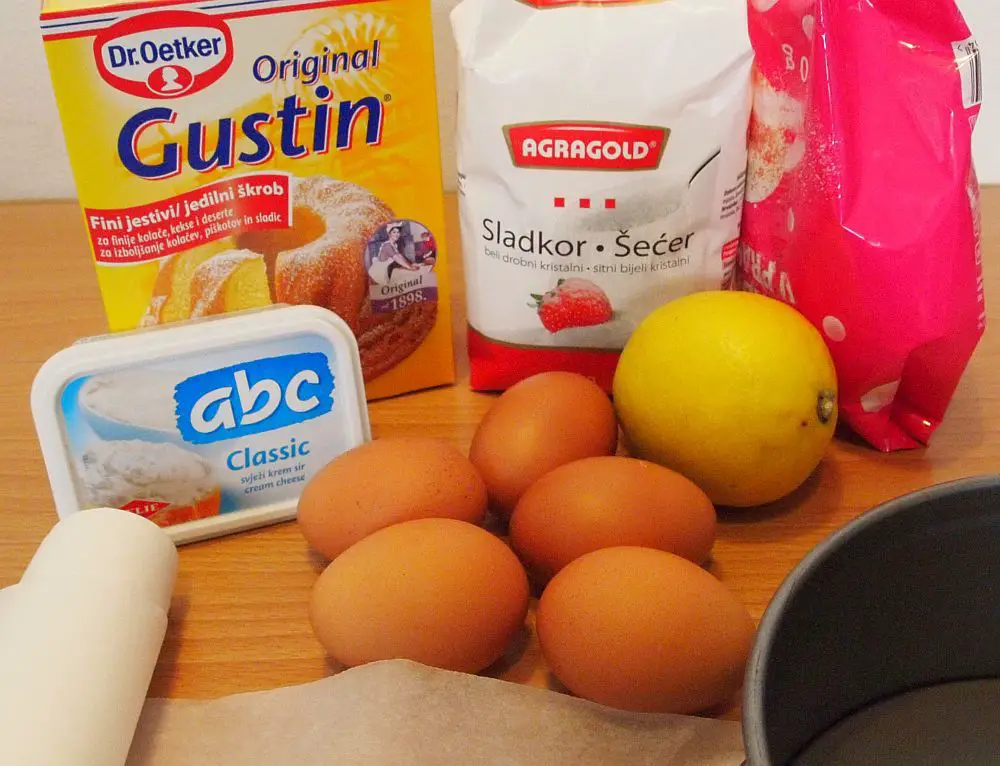
Ingredients (cotton cheesecake; for a 17cm cake pan, about 6-7 cm high)
The amount of ingredients listed above is quite small even for the small cake pan we’ve got. If your cake pan is significantly bigger we suggest you double the ingredients. If we were baking this cotton cheesecake without planning to put any cream inside and over it, then we’d probably increase the amount of ingredients by 1/3.
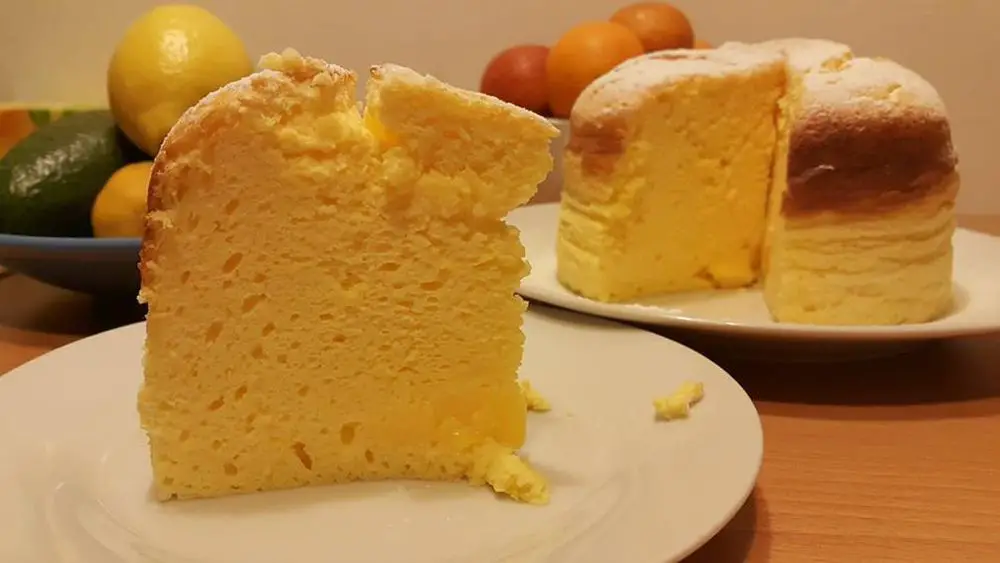
The first thing before you do anything else is to turn the oven to 175 degrees Celsius. Set the rack at its lowest point so that the paper sticking out of the cake pan will not touch the ceiling of the oven. Also get the big pan and the hot water ready, or even better, place in into the oven so that when your cake is to be baked you will just place it into the hot water that’s already inside. To get the idea, here’s a picture of our cake just before we took it out of the oven.
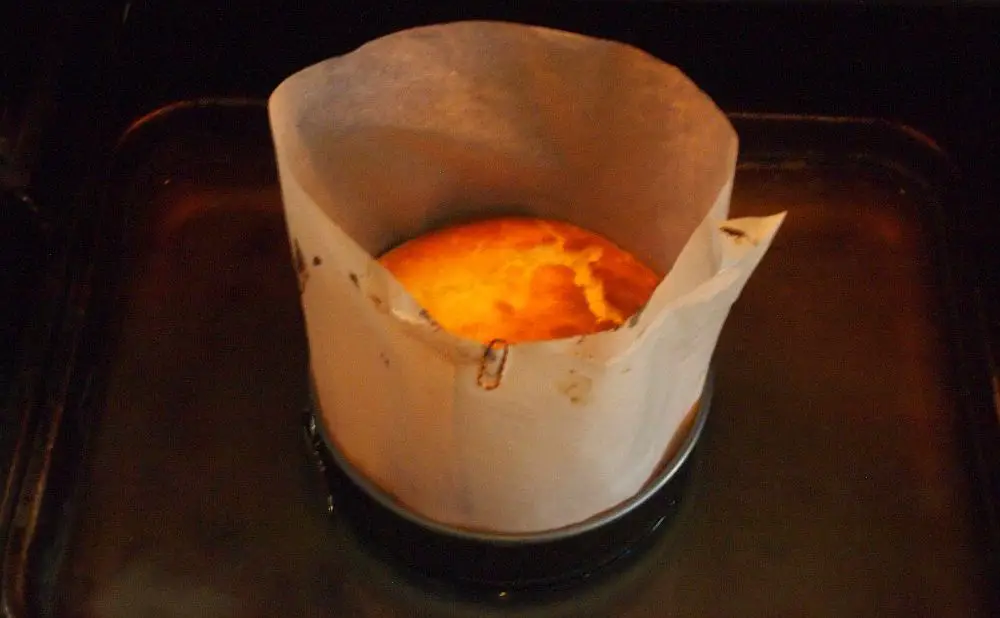
It is very important that the oven is fully heated and the temperature doesn’t drop much once you open the door and place you cake inside. The fluffiness of this cake is due to the egg not based on flour and baking powder, and thus it is sensitive to inconsistencies in temperature (a little like a soufflé).
The second important thing is that we’d like to keep our cake moist, not dry, which is why we’ll place it in the water - so that the bottom bakes slowly and doesn’t burn - and leave the sides of baking paper high - so that it doesn’t burn and dry out at the top. Baking paper will also prevent the cake from sticking to the bottom and the sides, and will also help it retain the shape while it cools down.
Before we start mixing the ingredients, draw around the bottom of the cake pan on the baking paper, cut it out and place it on the bottom of the pan. Press it into the corners to form a 0.5-1 cm high edge at the side.
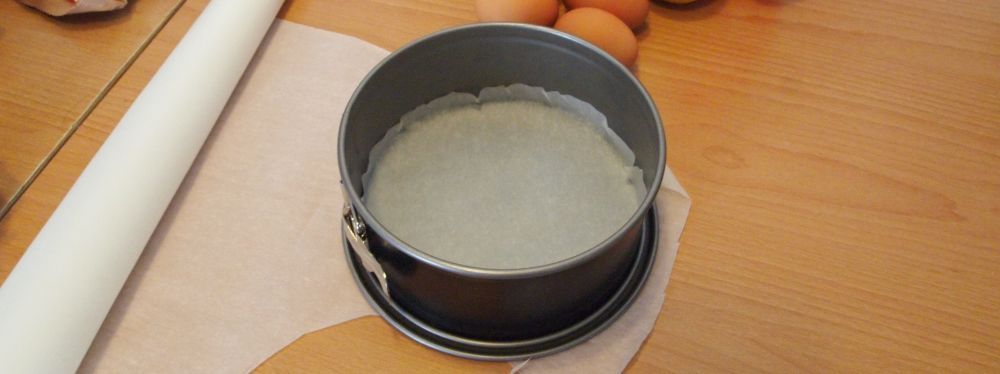
Then cut a long enough wide strip and place it outside-straight-side down into the pan and fix together at the top with a paper clip. Make sure it is wide enough so once you pour the cake mix in it will fit the width of the tray.

Then move to the cake mix: separate egg whites from egg yolks. Make sure no yolk escapes into the egg whites as then you won’t be able to beat them firmly. First beat the egg whites and when they start forming peaks, but are not completely hard yet, start adding castor sugar. The egg whites are beaten when they stay inside if the bowl is turned upside down.
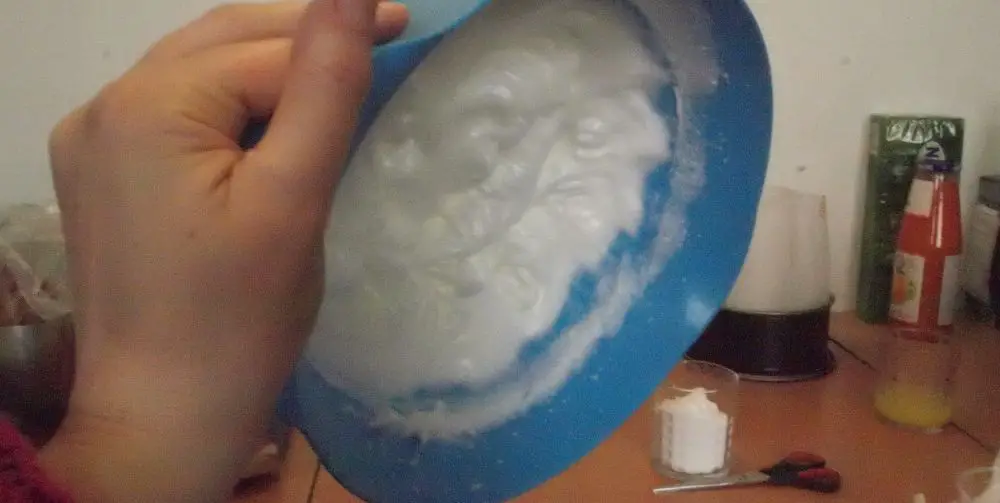
Beat the egg yolks and one by one mix in the sugar, lemon jest with juice, corn starch (stir in before mixing, or it’ll be blown all over your kitchen) and cream cheese. Put your mixer aside and take a big spoon, preferably a wooden one. Slowly stir in 1/3 of the egg whites and when they are more or less evenly spread throughout the mixture add the rest. Adding the egg whites in two rounds will allow your mixture to retain the maximum amount of air, which is what will make your cake fluffy.

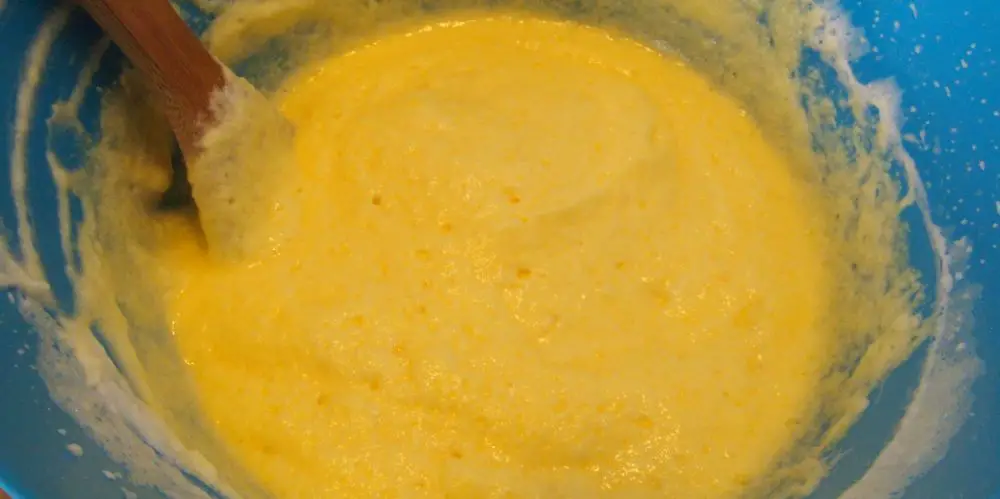
Pour the mixture into the baking pan, open the door of the preheated oven and place it into the pan of hot water. Close the door and do not open it until the cake is done. Bake for the first 20 minutes at 175 degrees Celsius, then another 15-20 minutes at 150 degrees. After 35-40 minutes turn the oven off, and let the cake rest inside for another 10 minutes. Then take it out of the water and let it rest outside until cool enough that you can release it from the cake pan. Leave it wrapped in paper till more or less cool.
Once cooled, turn it around carefully and remove the bottom paper first, then place it on your final cake plate, and remove the surrounding side paper as well. Cut it in the middle and put the upper part to one side.
Here you can get into a bit of a trouble if the cracked top starts falling into pieces. If it doesn’t now, it might when you’ll be placing it back to the top of the cake. Don’t panic, the cream will keep it together, just make sure you don’t break it too much.
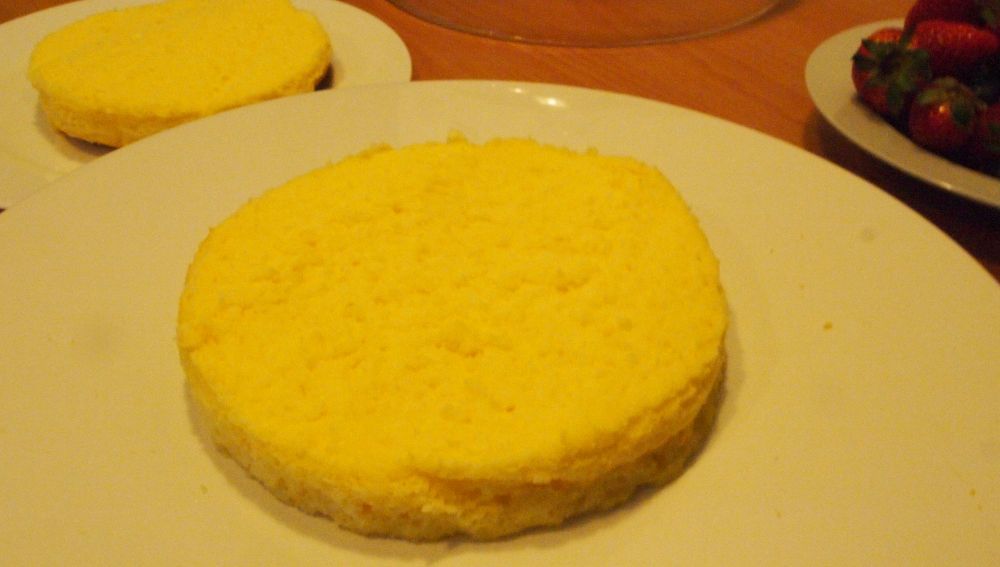
Now the filling.
Ingredients
Although we could just use all of the ingredients to make one kind of covering, we did not for the following reason: fruits such as pineapple, mango, papaya and kiwi contain a gelatine-melting enzyme. We were not planning to put any of those inside the cake, but wanted them at least for the decoration. Which is why the cake had to be covered with another layer of fresh cream.
So we beat the fresh cream first, add half the sugar then beat some more until done. Separately mix lemon juice and zest into the fresh cream and add gelatine. Stir for about a minute, then add the rest of the sugar, take a spoon and gently stir in half of the beaten fresh cream.
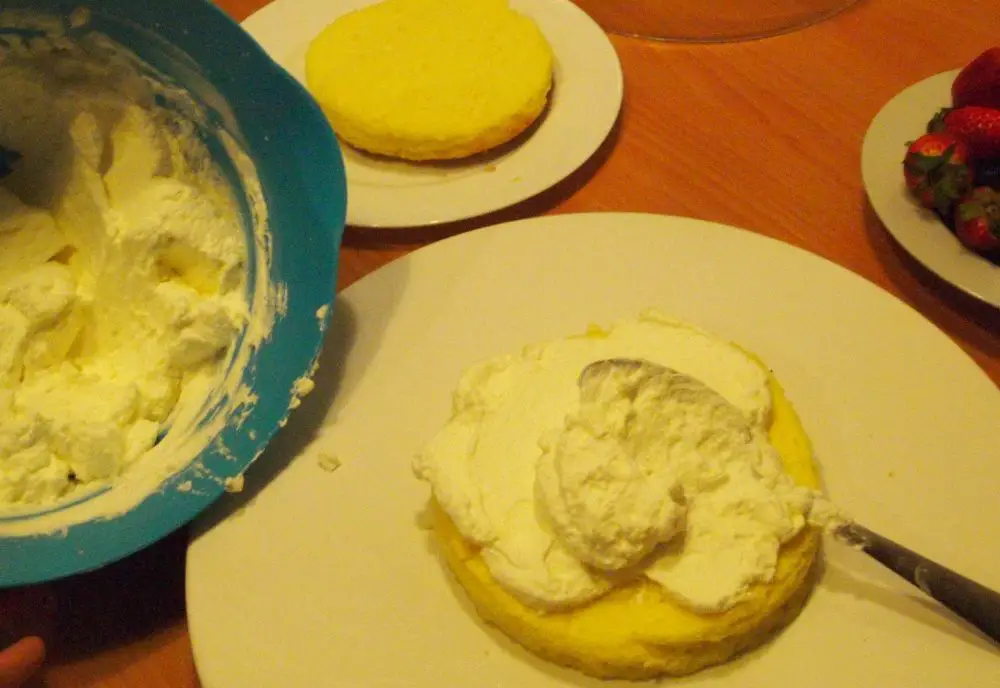
Spread some of the cream over the bottom layer of the cake, cover it with a layer of fruit – press it in a little and put another layer of cream at the top. Put the second layer of the cake on the top of that and cover the top and sides of the cake with the remaining cream. Then spread the remaining fresh cream on the top of that, decorate with fruit and place into the fridge for 2-3 hours.

Dober tek!

